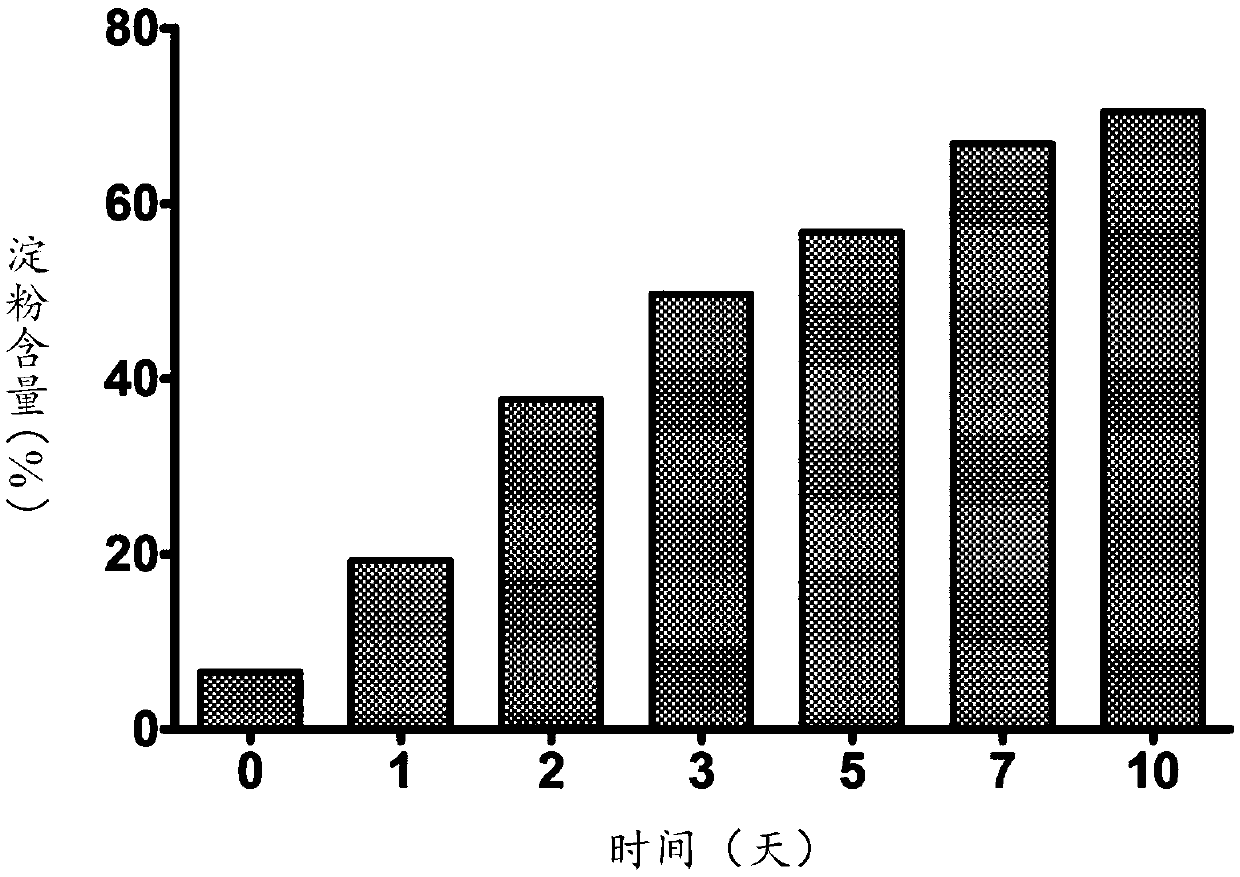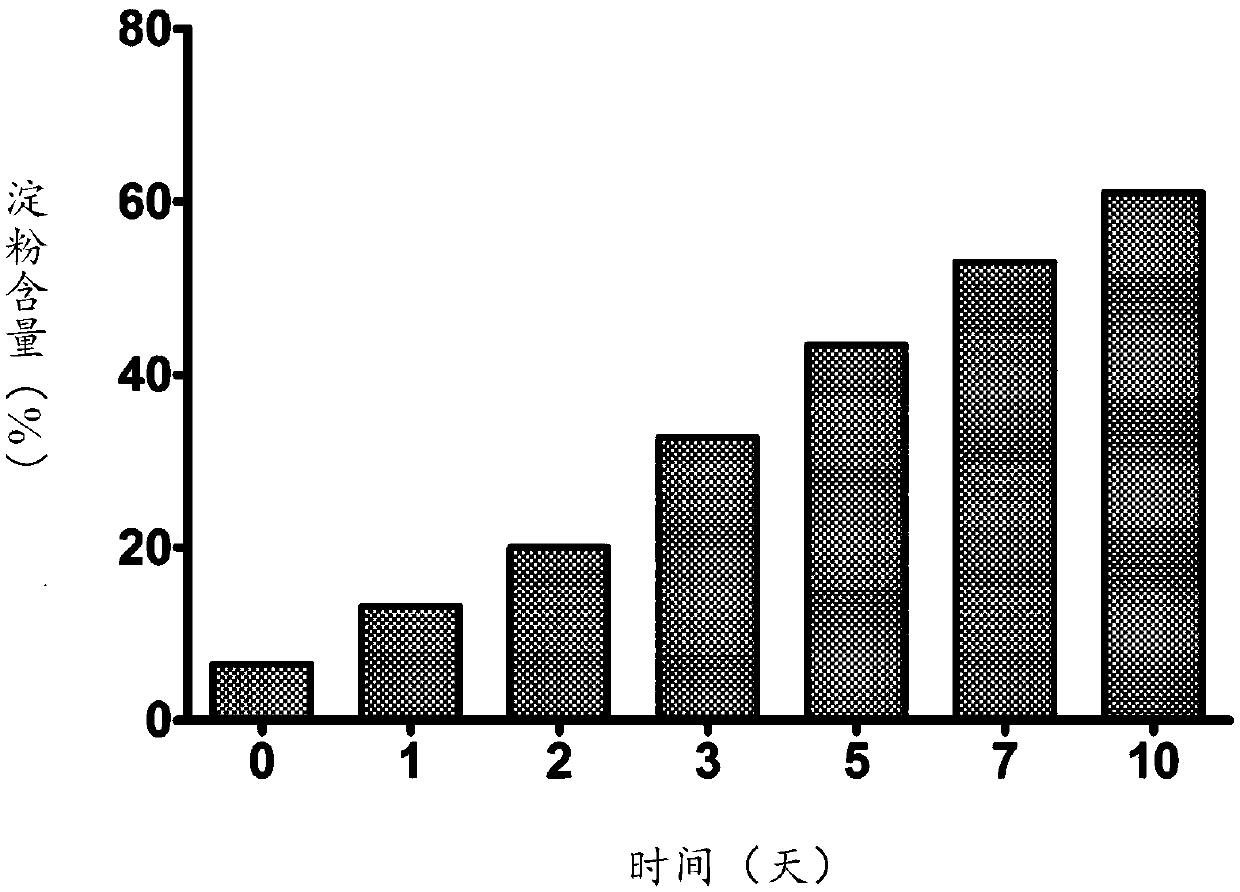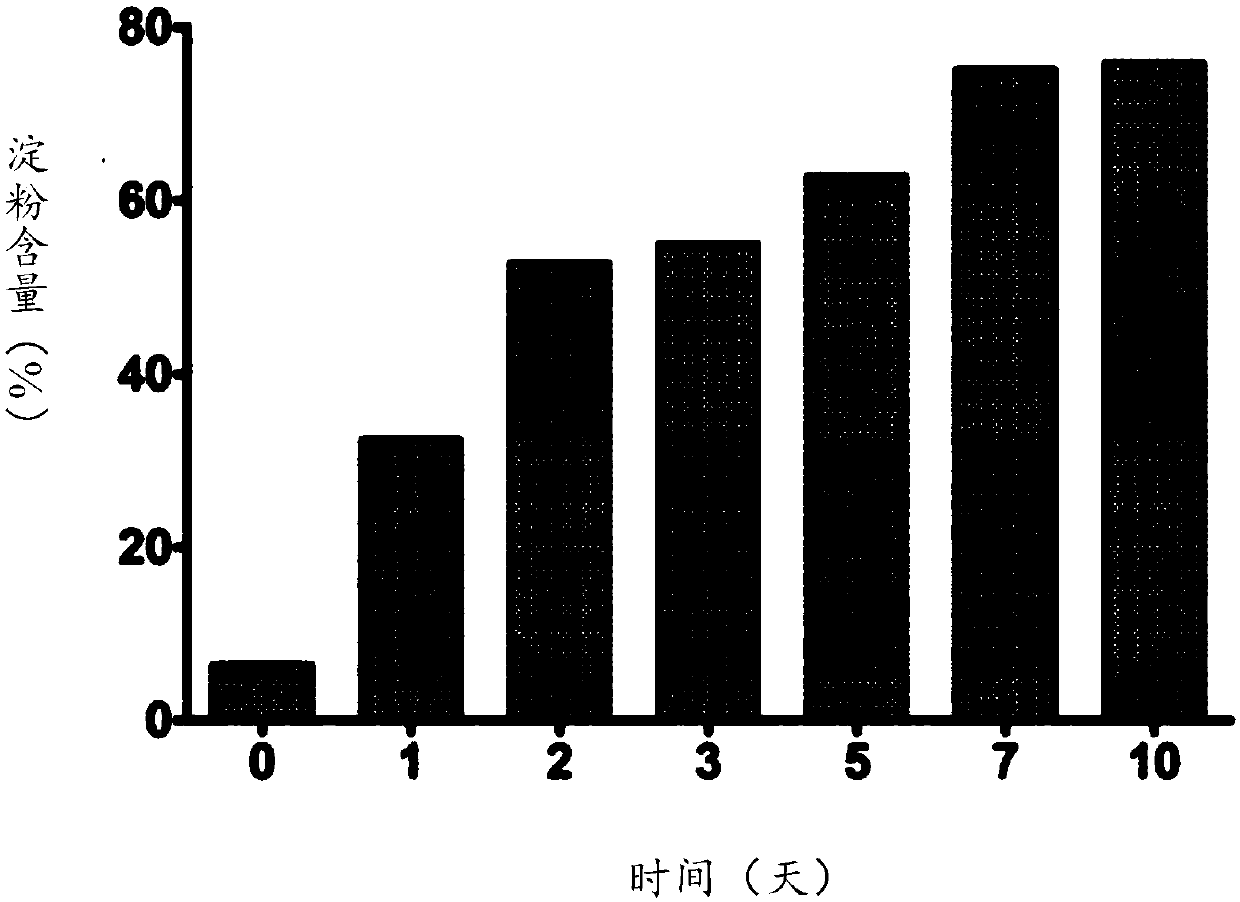Cultivation method for increasing duckweed starch content and application
A cultivation method and technology of starch content, applied in the field of cultivation to increase the starch content of duckweed, can solve the problems of no significant increase in starch production, reduction of duckweed biomass production, limited application and promotion, etc., to alleviate the problem of nitrogen and phosphorus pollution in water bodies , increase the starch content of duckweed, and the effect of low cost
- Summary
- Abstract
- Description
- Claims
- Application Information
AI Technical Summary
Problems solved by technology
Method used
Image
Examples
Embodiment 1
[0062] Example 1 Spray uniconazole and add CO 2 Cultivation of duckweed in distilled water (relative oligotrophic conditions)
[0063] The surface area is 54cm 2 Add 500mL of distilled water to the culture container, take the initial starch content as 6.52wt%, and the initial biomass as 21g / m in dry weight 2 1.0g of fresh duckweed was transferred into the culture container (coverage rate was about 100%), and then evenly sprayed 1~2mL concentration of uniconazole solution of 500mg / L to duckweed surface immediately (to analyze pure uniconazole azole preparation), after spraying, immediately pass CO 2 , cultured under full light conditions for 10 days, wherein the culture temperature was 25°C and the light intensity was 130 μM photons m -2 the s -1 , measure the CO in the air in the incubator twice a day 2 Concentration makes CO 2 The concentration is kept around 650ppm. Introduce CO into the spraying uniconazole solution respectively 2 On the 0th day, the 1st day, the 2n...
Embodiment 2
[0065] Example 2 Spraying uniconazole and adding CO 2 Cultivate duckweed in 1 / 5 concentration Hoagland medium (relative eutrophic condition)
[0066] The surface area is 54cm 2 Add 500mL1 / 5 concentration Hoagland culture fluid in the culture container, take initial starch content as 6.52wt%, initial biomass is 21g / m in terms of dry weight 21.0g of fresh duckweed was transferred into the culture container (coverage rate was about 100%), and then evenly sprayed 1~2mL concentration of uniconazole solution of 500mg / L to duckweed surface immediately (to analyze pure uniconazole azole preparation), after spraying, immediately pass CO 2 , cultured under full light conditions for 10 days, wherein the culture temperature was 25°C and the light intensity was 130 μM photons m -2 the s -1 , measure the CO in the air in the incubator twice a day 2 Concentration makes CO 2 The concentration is kept around 650ppm. Introduce CO into the spraying uniconazole solution respectively 2 On ...
Embodiment 3
[0068] Example 3 Spray uniconazole and add CO 2 Cultivation of duckweed in distilled water (relative oligotrophic conditions)
[0069] The surface area is 54cm 2 Add 500mL of distilled water to the culture container, take the initial starch content as 6.52wt%, and the initial biomass as 21g / m in dry weight 2 1.0g of fresh duckweed was transferred into the culture container (coverage rate was about 100%), and then evenly sprayed 1~2mL concentration was 800mg / L uniconazole solution (in order to analyze pure uniconazole) on the surface of duckweed azole preparation), after spraying, immediately pass CO 2 , cultured under full light conditions for 10 days, wherein the culture temperature was 25°C and the light intensity was 130 μM photons m -2 the s -1 , measure the CO in the air in the incubator twice a day 2 Concentration makes CO 2 The concentration is kept around 1200ppm. Introduce CO into the spraying uniconazole solution respectively 2 On the 0th day, the 1st day, th...
PUM
 Login to View More
Login to View More Abstract
Description
Claims
Application Information
 Login to View More
Login to View More - R&D
- Intellectual Property
- Life Sciences
- Materials
- Tech Scout
- Unparalleled Data Quality
- Higher Quality Content
- 60% Fewer Hallucinations
Browse by: Latest US Patents, China's latest patents, Technical Efficacy Thesaurus, Application Domain, Technology Topic, Popular Technical Reports.
© 2025 PatSnap. All rights reserved.Legal|Privacy policy|Modern Slavery Act Transparency Statement|Sitemap|About US| Contact US: help@patsnap.com



